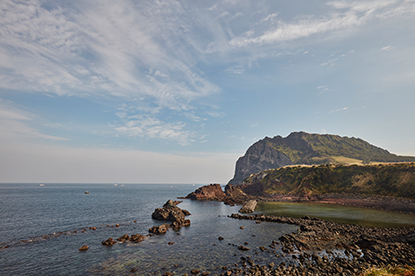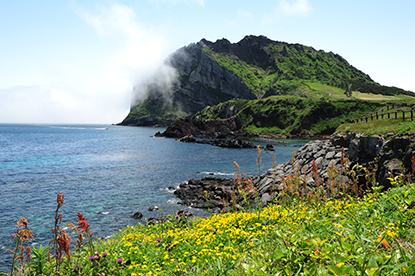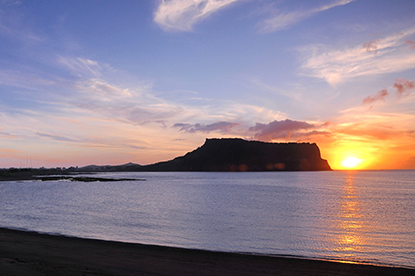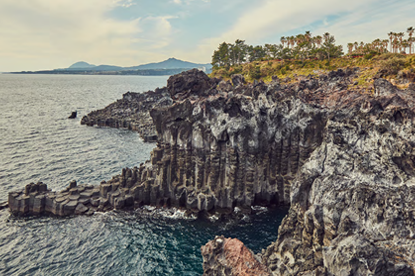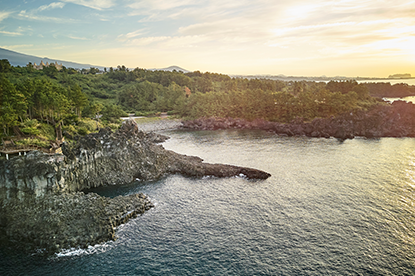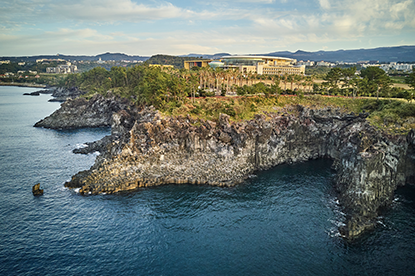Cultural Heritage Passport Tour
- Incheon International Airport PR Center (Traveler Center)
- Gaya Culture Route
- Gwandong Pungryu Era Route
- Baekje Antiquity Route
- Korean Temple Monasteries (Sansa) Route
- Korean Confucian Academy Route
- Prehistoric Landscape Route
- Mythic Landscape Route
- Folk Music Route
- Royalty Route
- Golden Era Route
Jeju - A beautiful island and a world heritage home to mystical legends
Once upon a time lived a tall and strong old woman named Seolmundae. The old woman, who decided to make an island in the middle of the blue sea, carried soil in her skirt, and began to pour it into the sea. The mound grew, and the tallest peak eventually became Hallasan Mountain, while the other shallow peaks became the “Oreum” hills found across all of Jeju-do. When the old lady was done creating the island, she thought Hallasan Mountain was a bit too tall. So, she decided to cut off the tip of the mountain and threw it towards the sea, This left-over part of Hallsan Mountain became Sanbangsan Mountain near the southwest coast of Jeju-do. Jeju-do, which has been shrouded in mystery since its birth, is home to some beautiful landscapes and unique culture. On this island, which was created by more than 100 volcanic events, you can see not only some of the most beautiful volcanic landscapes in Korea, but also the flora and fauna from warm to temperate, cold, and alpine regions. The Island is also a place of myths and legends, ceremonies and rituals, local dialects and customs. The entire island of Jeju-do is like a volcanic museum. It achieved the “triple crown” of UNESCO’s designations in the natural science sector: World Heritage, Biosphere/Reserves, and Geopark. Jeju-do’s Haenyeo culture and the Jeju Chilmeoridang Yeongdeunggut have also been recognized as intangible heritages.
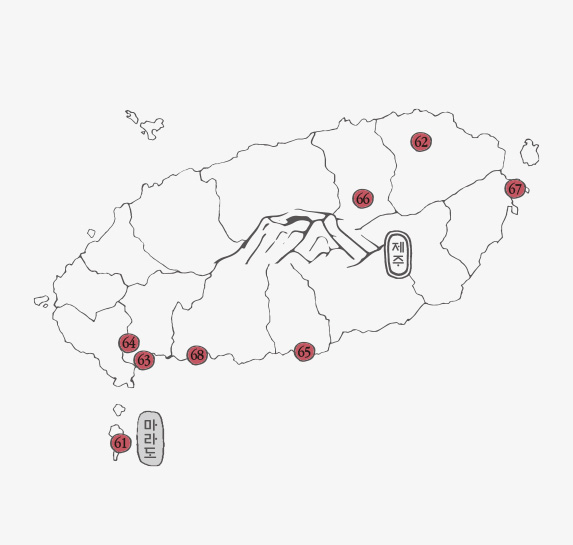
To get to Jeju-do from Seoul, you will need to take to the skies. The flight from Seoul to Jeju is one of the most popular flights in the world. Plenty of flights service the route every day. Still, it may be difficult to book a ticket on the days you want during weekends and the peak holiday season. Once you get to Jeju-do, the best way to get around the island would be in a rent-a-car. Most car rental companies offer free airport shuttle services to their rental car depots, which are 5~15 minutes from the airport. If rent-a-cars are not your thing, you can take the bus. There are intra-city buses that connect all parts of Jeju, airport limousine buses that run from Jeju International Airport to Seogwipo, tourist shuttle buses that run from the east to west of Jeju-do, and city tour buses that service routes between Jeju and Seogwipo. These buses offer you a chance to get around the island without the hassle of driving and parking.
Flavors of Jeju might just leave a lasting memory
-
Omegitteok
Omegitteok is a rice cake made by kneading glutinous millet powder, boiling it, and then coating it with soybean powder or red bean paste. Glutinous millet grows well in barren soil, and Omegitteok is typically made specifically using glutinous black millet.
-
Gogiguksu
Gogiguksu is a dish made with boiled dried noodles and pork stock topped with pork slices. The locals have bred black pigs for centuries, which is why this noodle soup has long been a part of Jeju-do’s tradition. It is served mostly to welcome guests, for village gatherings, or during ceremonies and rituals.
-
Horse meat
Horse meat, which is low in fat and high in protein, is high-quality meat that is softer and sweeter than beef. In addition to grilling, you can also eat horse meat sashimi, horse meat soup, horse meat steak, and horse meat shabu-shabu.
-
Dombegogi
“Dombe” is the Jeju dialect for “chopping board.” Dombegogi refers to large chunks of freshly boiled black pork served on a wooden chopping board. It is low in fat, and has a savory flavor. Dombegogi is often dipped in salt or salted fish, and eaten with aged Kimchi.
-
Galchiguk
The silver cutlassfish, which is a local specialty in Jeju, is beloved among both locals and visitors. It is often eaten roasted or stewed, but in Jeju, people like to eat cutlassfish soup made with fresh cutlassfish, aged pumpkin, green pepper, and Chinese cabbage. Galchiguk will give you a whiff of the sea with its refreshing broth and pieces of delicious cutlassfish.
-
Mandarin
Mandarin is a local specialty of Jeju-do and a fruit popular during the winter season. Since ancient times, orchards in Jeju-do have been famous for their mandarins. Today, the island produces a wide variety of tangerines, such as the Hallabong, Redhyang, and Cheonhyehyang. Snacks featuring mandarins, including mandarin chocolate, mandarin-flavored fruit jellies, mandarin tarts, mandarin pies, mandarin cookies, and the mandarin Hareubang bread, are also popular among locals and tourists.
2023 World Heritage Festival
-
Seogwipo Cultural Heritage Night
Inspired by the theme “Garden of the Gods, Seogwipo!,” the Seogwipo Cultural Heritage Night program features the beautiful natural scenery at Cheonjiyeon Waterfall and programs created to celebrate Jeju-do’s culture, which has more than 18,000 deities. The Cultural Heritage Night gives you a chance to immerse yourself in the diverse culture and art of Jeju-do from more than 310 years ago.
For more details, please check the festival’s official website below.
Website www.sgpculturenight.org
-
Tamna Cultural Festival
With its motto, “Life of Tamna, Renaissance of Jeju Culture,” the Tamna Cultural Festival is a traditional cultural festival that showcases the unique identity of Jeju Island.
For more details, please check the festival’s official website below.
Website www.tamnafestival.kr
-
Seolmundae Halmang Festival
Seolmundae Halmang Festival celebrates Seolmundae Halmang, a goddess from the myth that created Jeju-do, who is also the symbol of the motherly nature of the Jeju people. The Festival promotes and carries on the legends, myths, and culture of Jeju-do island.
For more details, please check the festival’s official website below.
Website www.jeju.go.kr/jejustonepark
-
Seongsan Sunrise Festival
The Seongsan Sunrise Festival inspires and unites locals near Seongsan Ilchulbong Peak, a landmark of Jeju acclaimed for its beauty and significance by the international community. Seongsan Ilchulbong has three UNESCO natural heritage designations, and is one of the seven natural wonders of the world, a top 10 eco-tourism destination of Korea, and one of the twelve Guinness destinations for the past 50 years of Korean tourism.
For more details, please check the festival’s official website below.
Website https://www.sunrisefestival.kr/
-
Jeju Haenyeo Festival
The Jeju Haenyeo Festival celebrates the excellence of Jeju Haenyeo culture and the proud heritage of Jeju Haenyeo divers. It is the only maritime cultural festival in the world focused on the unique culture of the Haenyeo and their community.
For more details, please check the festival’s official website below.
Website https://www.jeju.go.kr/haenyeo/news/news.htm?act=view&seq=1382532
-
Soesokkak Festival
Legend has it, Soesokkak got its name from its shape - it looks like a cow lying down on the ground. More specifically, the freshwater from Hyodoncheon River meets with seawater and collects in a deep lagoon shaped like a cow (“Soe” means cow and “so” means a lagoon). Add “Kkak,” which means “end” in the local dialect, then you get the name “Soesokkak.”
For more details, please check the festival’s official website below.
Website https://www.seogwipo.go.kr/festivals/blacksand/index.htm
- Marado Island Nature Reserve, Jeju
- Jeju Manjanggul Lava Tube
- Yongmeori Coast in Sagye-ri, Jeju-do
- Sanbangsan Mountain in Seogwipo, Jeju
- Soesokkak River Pool in Seogwipo, Jeju
- Geomunoreum Volcanic Cone in Seonheul-ri, Jeju
- Seongsan Ilchulbong Tuff Cone Natural Reserve, Jeju
- Columnar Joint Along the Jungmun and Daepo Coasts, Jeju
Yongmeori Coast in Sagye-ri, traces of time carved into the cliffs
-
Address
Sagye-ri, Andeok-myeon, Seogwipo-si, Jeju-do
-
Inquiries
064-794-2940
-
Opening hours
09:00 - 16:00
(Public access denied during high tide and bad weather conditions) -
Stamp
Ticket office at Yongmeori Coast
-
Admission
Adults KRW 2,000 / Teenagers KRW 1,000 / Children KRW 1,000
-
Directions
(From Jeju International Airport) Take bus no. 326 at Jeju International Airport bus stop (to Halla University) → Get off at Halla Hospital bus stop, then transfer to bus no. 251 → Get off at Sagye-ri Dongdong bus stop → Walk for 6 minutes
(From the Port of Jeju) Take bus no. 465 (circular route to the Jeju Museum of Art) at the Jeju Passenger Ferry Terminal bus stop → Get off at Dongsangyo Bridge bus stop, then transfer to bus no. 251 → Get off at Sagye-ri-Dongdong bus stop → Walk for 6 minutes
On the beach in front of Sanbangsan Mountain, you will find a rock cliff that is millions and millions of years old. Yongmeori Coast gets its name from a rock formation that resembles the head of a dragon heading into the sea. The cliff, which has been cut and carved by powerful waves, has a strange shape and curves that gracefully bend around the coastline like waves. Traces of sedimentation and erosion carved into the caves and cliffs along Yongmeori Coast are evidence of just how long it took nature to create the Beach. Yongmeori Coast is the oldest volcanic formation in Jeju-do, and it takes roughly 30 minutes to go around it on foot. Access is prohibited during high tide or in bad weather conditions, so be sure to check the conditions before visiting.
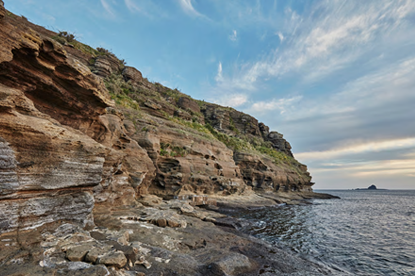
Provided by the Korea Cultural Heritage Foundation
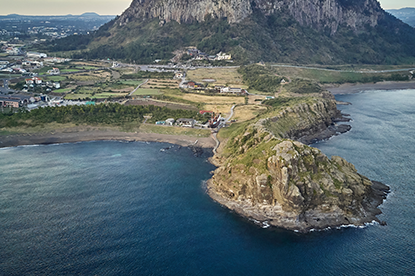
Provided by the Korea Cultural Heritage Foundation
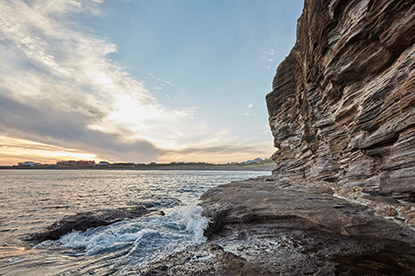
Provided by the Korea Cultural Heritage Foundation









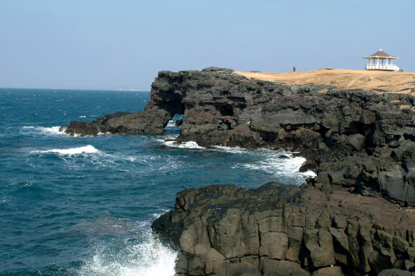
 Marado Ferry Service
Marado Ferry Service
 Legend of Halmangdang
Legend of Halmangdang
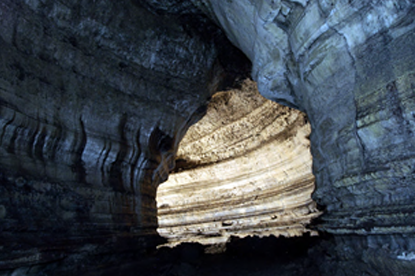
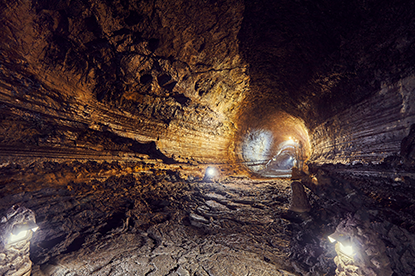
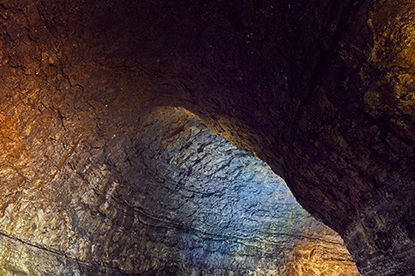
 Gimnyeongsagul Lava Tube
Gimnyeongsagul Lava Tube
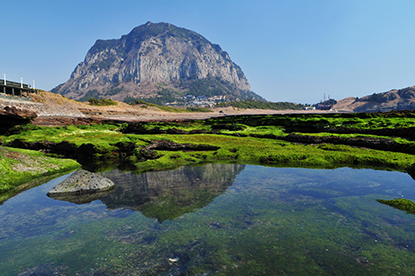
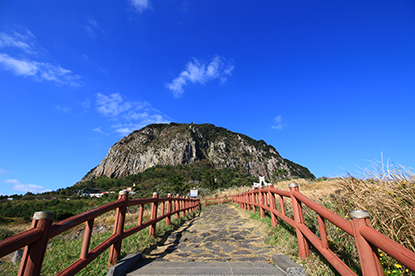
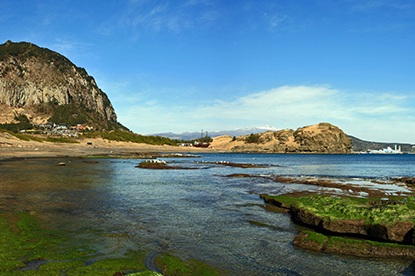
 Tears of Sanbangdeok
Tears of Sanbangdeok
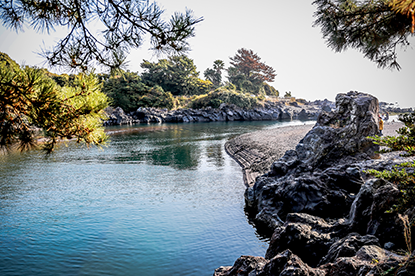
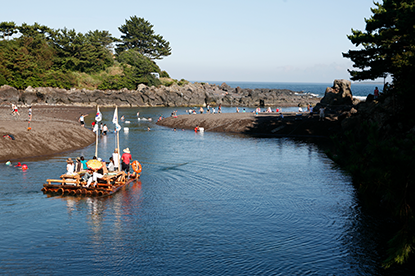
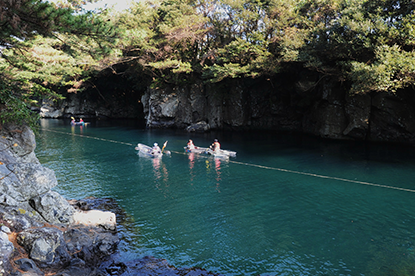
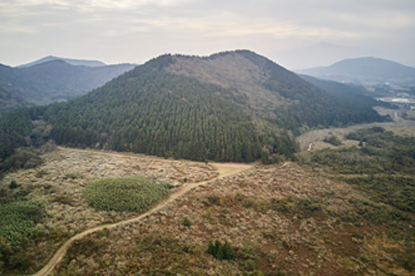
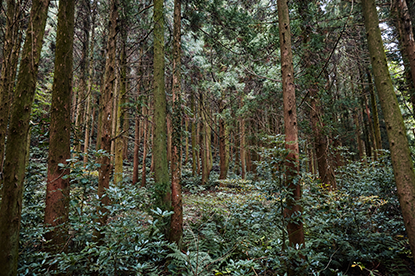
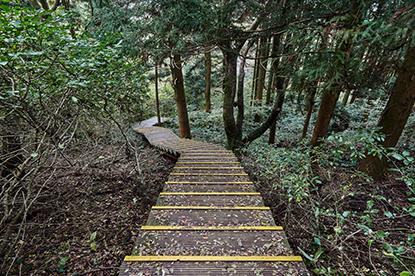
 Trekking through the Geomunoreum Trail
Trekking through the Geomunoreum Trail
 Geomunoreum International Trekking Competition
Geomunoreum International Trekking Competition
